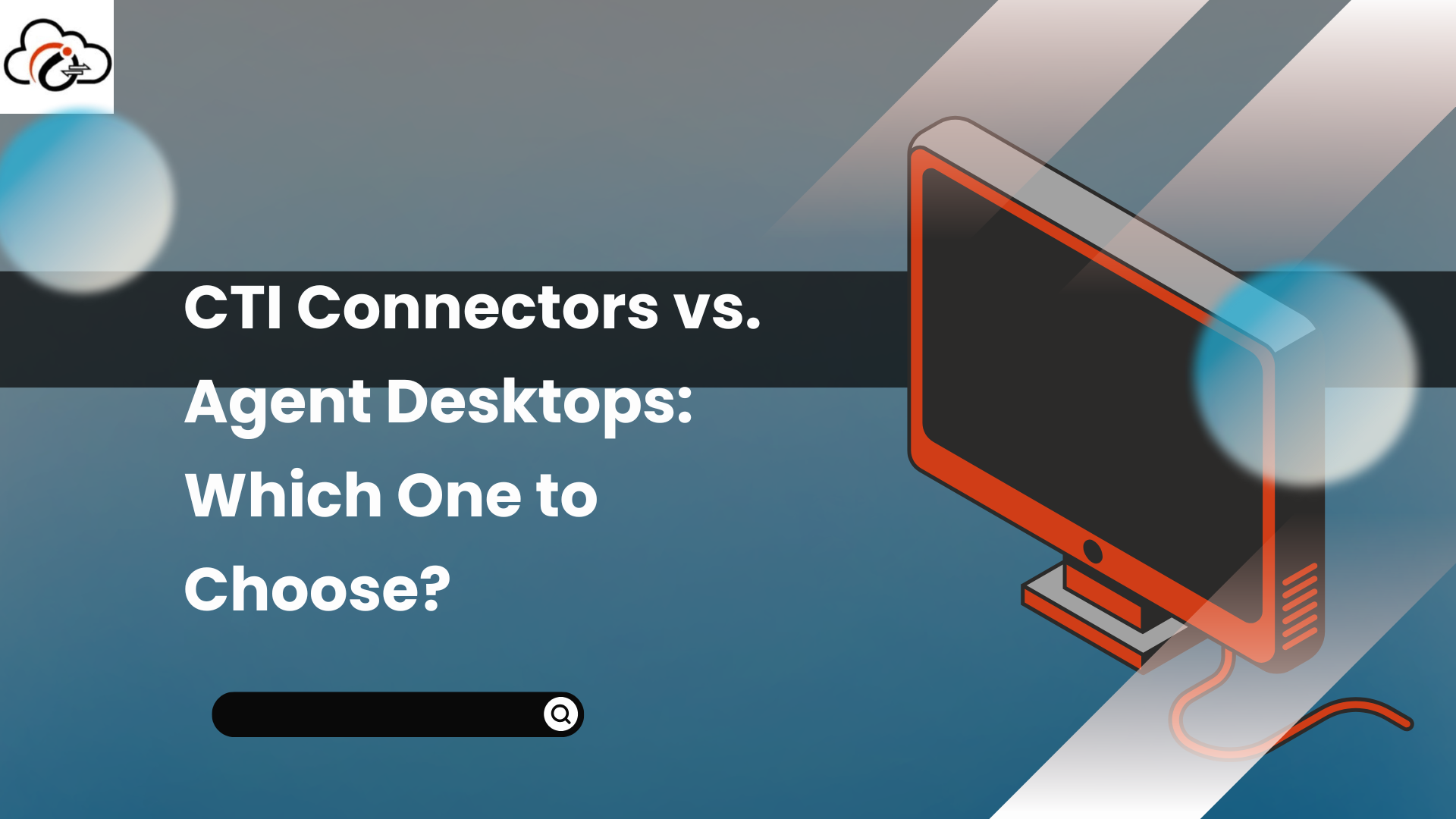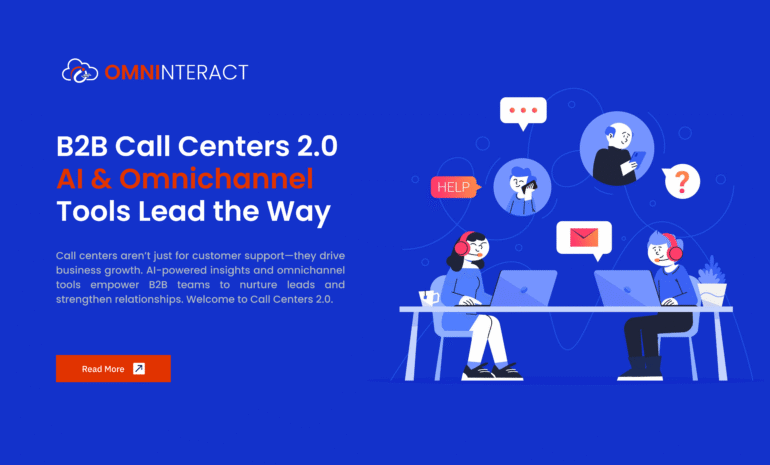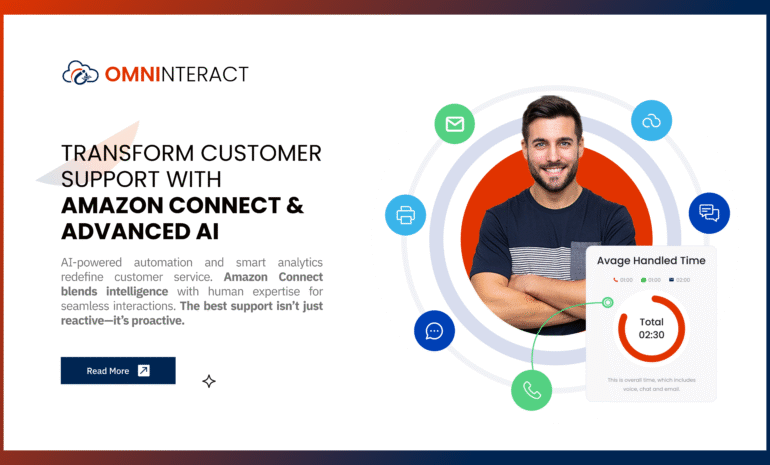A call comes in. The agent scrambles between multiple screens, searching for customer details while trying to keep the conversation smooth. The delay frustrates the customer, and the agent feels overwhelmed. Imagine a system where customer information appears instantly, workflows are automated, and agents handle interactions efficiently. This is the difference that the right contact center technology makes.
In today’s fast-paced world, businesses rely on technology to enhance customer experiences. Two of the most important tools in this space are CTI connectors and agent desktops. Both solutions improve efficiency, but they serve different purposes.
With the rise of Omninteract, a modern contact center platform, businesses now have access to seamless integrations that unify customer interactions across multiple channels. Whether it’s voice, chat, email, or social media, Omninteract ensures that agents have everything they need in one place.
This blog will break down the differences between CTI connectors vs. agent desktops, explain their use cases, and highlight how platforms like Omninteract are changing the way businesses handle customer interactions.
What Is a CTI Connector?
A Computer Telephony Integration (CTI) connector links phone systems with customer management platforms like CRM (Customer Relationship Management) software. This enables agents to manage calls directly from their CRM, making interactions faster and more effective.
Key Features of CTI Connectors:
- Screen Pops – Customer details appear automatically when a call is received.
- Click-to-Dial – Agents can make calls with a single click inside their CRM.
- Call Logging and Notes – All call details are recorded automatically.
- Automated Workflows – Actions like follow-up emails are triggered automatically.
Who Benefits the Most from CTI Connectors?
- Sales Teams – Quick access to customer details improves lead conversion.
- Support Teams – Reduces response times by providing instant customer insights.
- CRM-Focused Businesses – Companies that primarily operate within platforms like Salesforce, ServiceNow, or Omninteract.
Market Insight: The global CTI software market is expected to grow from $2.87 billion in 2024 to $10.66 billion by 2032, with a CAGR of 17.8% (Business Research Insights).
What Is an Agent Desktop?
Unlike CTI connectors, an agent desktop provides a unified interface where agents can handle all customer interactions—voice, chat, email, and social media—without switching applications.
Key Features of Agent Desktops:
- Omnichannel Support – Agents can manage voice, chat, email, and social media from a single interface.
- Customer Interaction History – A complete view of past interactions for personalized service.
- Real-Time Insights – Displays customer journey data and suggested responses.
- Task Management – Helps prioritize tasks and track customer cases efficiently.
Who Benefits the Most from Agent Desktops?
- Enterprise Contact Centers – Businesses that manage high call volumes across multiple channels.
- Omnichannel Support Teams – Companies that prioritize seamless customer experiences across voice, email, and chat.
- Process-Driven Organizations – Workflows that require task automation and collaboration.
Market Insight: Omnichannel support improves customer satisfaction scores by up to 20%, highlighting the importance of integrated systems like agent desktops (Salesforce).
CTI Connectors vs. Agent Desktops: Key Differences
| Feature | CTI Connector | Agent Desktop |
| Scope | Integrates telephony with CRM | Combines voice, chat, email & more |
| Best For | Call-focused teams | Omnichannel support |
| User Experience | Embedded in CRM | Customizable, unified interface |
| Flexibility | Limited customization | Highly adaptable to business needs |
| Cost | Lower initial cost | Investment in long-term efficiency |
Cost Insight: The cost of CTI connectors and agent desktops is comparable, but agent desktops provide a more complete customer engagement solution.
Consumer Behavior & Market Trends
Customers today expect faster, more personalized service. They also want consistency, whether they reach out via phone, chat, or email. This shift is driving demand for tools that offer a 360-degree customer view.
What Customers Expect:
Instant Access to Help – 80% of customers expect immediate responses (HubSpot). Personalized Experiences – 72% of customers prefer brands that recognize their past interactions (Salesforce).
Omnichannel Consistency – 73% of customers use multiple channels during their journey (Harvard Business Review).
By leveraging tools like Omninteract, businesses can meet these expectations, improve agent productivity, and deliver better customer experiences.
Which One Should You Choose?
- Choose a CTI Connector if your business relies heavily on a CRM and mainly handles phone-based interactions.
- Choose an Agent Desktop like Omninteract if you need a complete, omnichannel solution that integrates voice, chat, email, and CRM data into one platform.
Final Thoughts
Choosing between CTI connectors vs. agent desktops depends on your business needs. CTI connectors are great for call-focused teams working within a CRM, while agent desktops like Omninteract offer a complete customer engagement solution.
With the growing demand for seamless, omnichannel experiences, Omninteract provides businesses with the tools to stay ahead. As contact centers evolve, adopting the right technology will ensure better agent performance, improved efficiency, and happier customers.
Ready to enhance your contact center experience? Explore Omninteract today.



